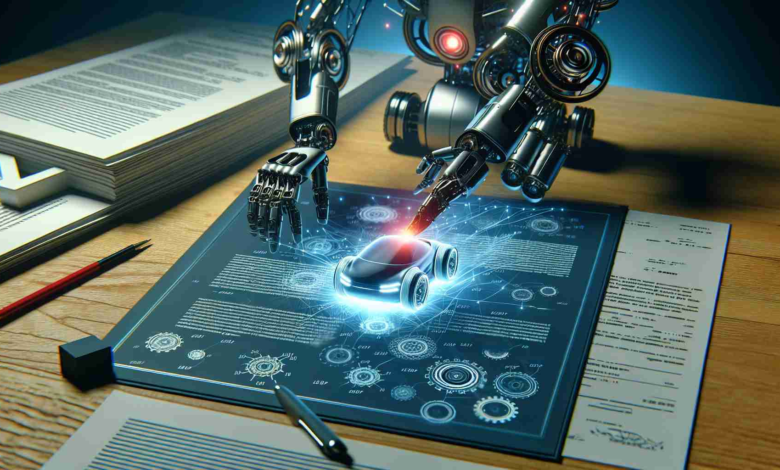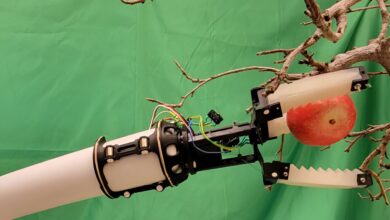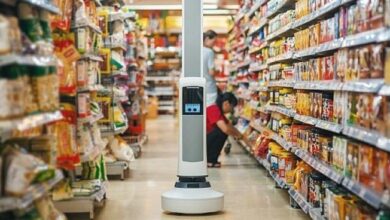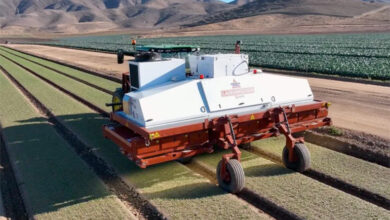Tesla Files Patents for Advanced Robotics Technology

Summary: Tesla has been making strides in the development of its humanoid robot, Optimus. The company has filed several patent applications that hint at sophisticated technologies designed in-house, suggesting a future where robots could effectively perform tasks currently handled by human workers.
Tesla’s Optimus humanoid robot may soon benefit from an array of innovative technological advancements as the electric vehicle giant has submitted a series of patent applications detailing the proprietary technology that powers the robot’s movements. Tesla has previously demonstrated prototypes with capabilities focused on performing tedious tasks, aiming to offload such labor from humans.
A notable advancement is the complete in-house development of custom actuators, which are crucial in determining the robot’s fluid and natural movements. These actuators are strategically placed throughout the robot’s body, with variations designed for specific joint and limb functionalities. Diagrams included in the applications depict both the initial and newer generation Optimus models showcasing the internal mechanics.
One patent details an intricate knee joint assembly, underlining the technological sophistication behind robots’ locomotion. This system could allow for fluid, human-like walking, increasing the robot’s stability and potential applications.
Perhaps the most intriguing is the patent application for the robot’s hands, described as “underactuated hand with cable-driven fingers.” This system points to a future where robots like Optimus can manipulate objects with dexterity that approaches that of human hands.
These recent forays into advanced robotics underscore Tesla’s commitment not only to revolutionize transportation but also to potentially reshape the labor landscape with intelligent automation.
Tesla’s Vision for the Optimus Humanoid Robot
Tesla’s incursion into the field of highly sophisticated humanoid robots with its Optimus project points to a potential future where robots are seamlessly integrated into various sectors of industry and daily life. The endeavor illustrates a broader trend within the robotics industry toward developing machines capable of undertaking complex tasks previously requiring human cognition and delicate motor skills.
Industry and Market Forecast
The global market for humanoid robots has been showing a promising growth trajectory. According to market research reports, the sector is expected to expand significantly in the coming years, driven by advancements in artificial intelligence, machine learning, and robotics. The demand for humanoid robots is seeing an uptick in diverse applications, from healthcare and education to manufacturing and services. This expanding market could be fertile ground for Tesla’s Optimus, particularly given the company’s penchant for innovation and disruption.
Technological Sophistication and Issues
Building robots akin to human capabilities entails overcoming immense technological challenges. One salient issue is achieving balance and coordination, exemplified in patent applications such as the one for Tesla’s sophisticated knee joint. The interplay between actuators, sensors, and control systems is key to enabling robots to navigate real-world environments without mishaps.
Dexterity is another significant challenge, one Tesla aims to address with its “underactuated hand with cable-driven fingers.” The finesse required for a robot to handle objects as delicately as a human is substantial, yet unlocking such a feature would open myriad uses, from precise manufacturing tasks to aiding in day-to-day activities for individuals with disabilities.
In terms of industrial implications, such robots could not only augment the workforce in sectors like manufacturing, logistics, and services but could also raise concerns over job displacement and the ethical treatment of robots. The societal and economic impact of widespread adoption of smart robots like Optimus will likely prompt significant discussion and policy-making to balance the benefits of automation with the protection of the workforce.
For high-quality, up-to-date information on trends in the robotics industry and insightful analyses, interested readers may refer to the websites of leading market research firms or technology news outlets. To keep abreast of official updates from Tesla regarding the Optimus robot and other company projects, you can visit Tesla’s homepage.
As the robotics industry continues to evolve, it remains to be seen how Tesla’s Optimus will fare in an increasingly competitive market. The company’s dual emphasis on in-house component development and technological innovation could very well position it at the forefront of a new era in automation and human-robot interaction.

Marcin Frąckiewicz is a renowned author and blogger, specializing in satellite communication and artificial intelligence. His insightful articles delve into the intricacies of these fields, offering readers a deep understanding of complex technological concepts. His work is known for its clarity and thoroughness.



